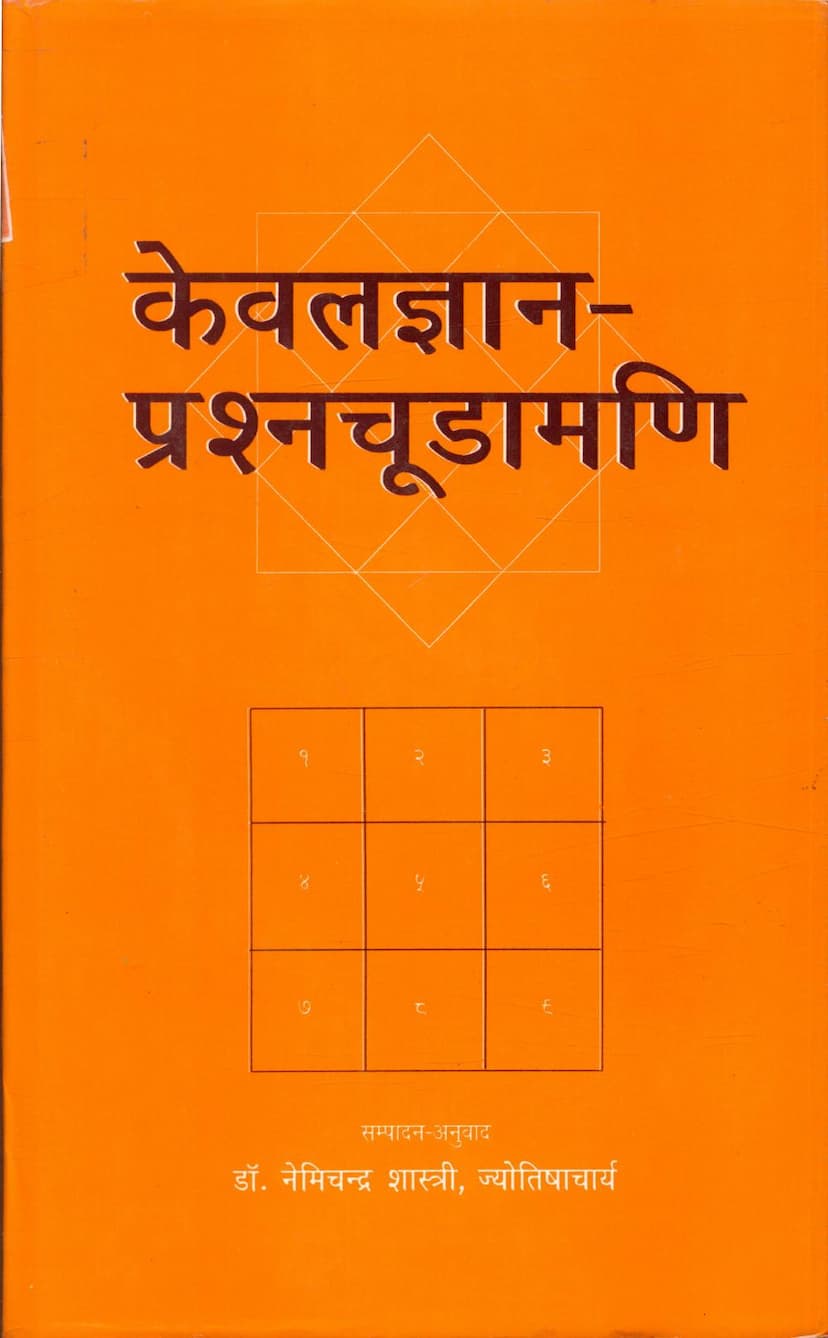Kevalgyan Prashna Chudamani
Added to library: September 2, 2025

Summary
Based on the provided text, here's a comprehensive summary of the Jain text "Kevalgyan Prashna Chudamani":
Book Title: Kevalgyan Prashna Chudamani (केवलज्ञान प्रश्नचूडामणि)
Author: Nemichandra Shastri (सम्पादन-अनुवाद डॉ. नेमिचन्द्र शास्त्री)
Publisher: Bharatiya Jnanpith (भारतीय ज्ञानपीठ)
Overview:
"Kevalgyan Prashna Chudamani" is described as a concise, important, and miraculous text within the field of Prashna Shastra (प्रश्नशास्त्र), also known as horary astrology or question astrology. It is presented as a practical guide to obtaining answers to various life queries without needing a birth chart. The core principle of this text lies in Prashnashastra, which falls under Phalit Jyotish (फलित ज्योतिष - predictive astrology).
Key Features and Principles:
- Direct Answers: The book promises to provide answers to desired questions by simply naming a flower, fruit, deity, river, or mountain. This method is believed to reveal insights into aspects of life such as life and death, gain and loss, union and separation, happiness and sorrow, the whereabouts of stolen items, the return time of those abroad, the birth of a son or daughter, and the outcome of legal cases.
- Methodology: The text elaborates on the principles of Prashna Shastra, which typically involves answering questions based on the moment the question is asked. The primary methods for answering questions in astrology are:
- Knowing the time of the question.
- Based on the "Swar" (स्वर - breath or vocal tone).
- Based on the "Prashnashar" (प्रश्नाक्षर - letters of the question). The book emphasizes the third method (Prashnashar) as being more psychological and authentic.
- Prashnashar Analysis: The core of the book's methodology involves analyzing the letters (varnas) of the question asked by the querent. It details how to divide the alphabet into five categories (vargas) and use these categories, along with concepts like "Sanyukt" (संयुक्त - combined), "Asanyukt" (असंयुक्त - uncombined), "Abhihit" (अभिहित), "Anabhihit" (अनभिहित), "Abhighaṭit" (अभिघातित), "Āliṅgita" (आलिंगित), "Abhidhumita" (अभिधूमित), and "Dagdh" (दग्ध), to understand the underlying sentiment and predict the outcome.
- Psychological Foundation: The introduction highlights that the Prashnashar method, which relies on the letters of the question, is deeply rooted in psychology. It suggests that the choice of letters and words reflects the querent's inner thoughts, desires, and mental state, which can be analyzed to predict future events. This is contrasted with methods that rely solely on the time of the question, arguing that the latter might yield the same answers for multiple people asked at the same moment, which is impractical.
- Jain Astronomical Tradition: The extensive introduction by Dr. Nemichandra Shastri delves into the importance and antiquity of Jain astrology. It traces the development of Jain astronomical knowledge, mentioning various Jain texts like Vedanga Jyotisha, Suryaprajnapati, Gargasamhita, Jyotishkarandaka, and Shatkhandagama. It emphasizes the significant contributions of Jain scholars to Indian astrology, particularly in the areas of mathematics (arithmetic, geometry, algebra, trigonometry) and predictive astrology. The text showcases the sophisticated mathematical systems developed by Jain scholars, which are considered foundational to Indian astronomical calculations.
- Structure and Content: The book is structured with a detailed introduction discussing the significance and history of Jain astrology, followed by the core text explaining the Prashnashar methodology. It includes various charts and tables, such as vowel classifications, astrological cycles, and directional indicators. The table of contents reveals a wide range of topics covered, from basic principles of question analysis to specific predictions for various life events, including a detailed section on constructing lost horoscopes and various astrological rituals and timings (Muhurtas).
- Practical Application: The text provides practical examples and methods for determining the outcome of specific queries, such as work completion, gain or loss, recovery from illness, and the likelihood of a favorable legal outcome. It also outlines methods for determining the characteristics of a stolen object, the approximate time of return for a traveler, and the gender of an unborn child.
- Historical Context: The introduction places Jain astronomical contributions within the broader context of Indian scientific history, arguing for their significant and foundational role. It points to the influence of Jain astronomical concepts on prominent figures in Indian astronomy and mathematics.
- Author's Contribution: Dr. Nemichandra Shastri is credited with editing and translating the work, making a complex and ancient text accessible to a wider audience through his scholarly annotations and supplementary materials.
In essence, "Kevalgyan Prashna Chudamani" is a practical manual for predictive astrology within the Jain tradition, utilizing a psychologically grounded method of analyzing the letters of a question to provide specific answers to a wide array of life concerns.